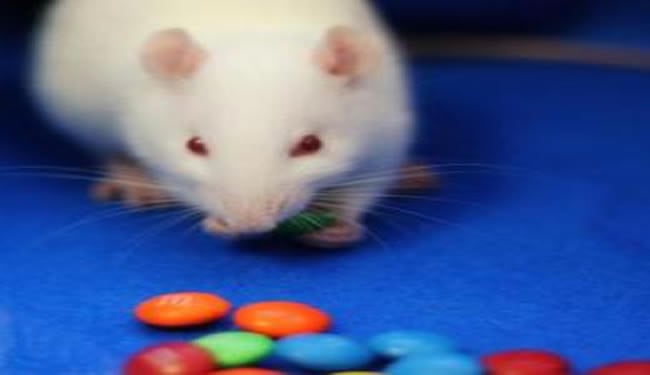Researchers have new evidence in rats to explain how it is that chocolate candies can be so completely irresistible. The urge to overeat such deliciously sweet and fatty treats traces to an unexpected part of the brain and its production of a natural, opium-like chemical, according to a report published online on September 20th in Current Biology, a Cell Press publication.
“This means that the brain has more extensive systems to make individuals want to overconsume rewards than previously thought,” said Alexandra DiFeliceantonio of the University of Michigan, Ann Arbor. “It may be one reason why overconsumption is a problem today.”
DiFeliceantonio’s team made the discovery by giving rats an artificial boost with a drug delivered straight to a brain region called the neostriatum. Those animals gorged themselves on more than twice the number of M&M chocolates than they would otherwise have eaten. The researchers also found that enkephalin, the natural drug-like chemical produced in that same brain region, surged when rats began to eat the candy-coated morsels, too.

It’s not that enkephalins or similar drugs make the rats like the chocolates more, the researchers say, but rather that the brain chemicals increase their desire and impulse to eat them.
The findings reveal a surprising extension of the neostriatum’s role, as DiFeliceantonio notes that the brain region had primarily been linked to movement. And there is reason to expect that the findings in rats can tell us a lot about our own binge-eating tendencies.
“The same brain area we tested here is active when obese people see foods and when drug addicts see drug scenes,” she says. “It seems likely that our enkephalin findings in rats mean that this neurotransmitter may drive some forms of overconsumption and addiction in people.”
The researchers now hope to unravel a related phenomenon that some of us might wish we could do more to control: what happens in our brains when we pass by our favorite fast food restaurant and feel that sudden desire to stop.
Notes about this gustatory sensory research
Contact: Elisabeth Lyons – Cell Press
Source: Cell Press press release
Image Source: Rat eating candies image adapted from image credited to Current Biology, DiFeliceantonio et al.: “Enkephalin surges in dorsal neostriatum as a signal to eat.”
Original Research: Abstract for “Enkephalin Surges in Dorsal Neostriatum as a Signal to Eat” by Alexandra G. DiFeliceantonio, Omar S. Mabrouk, Robert T. Kennedy and Kent C. Berridge in Current Biology 20 September 2012 doi: 10.1016/j.cub.2012.08.014







